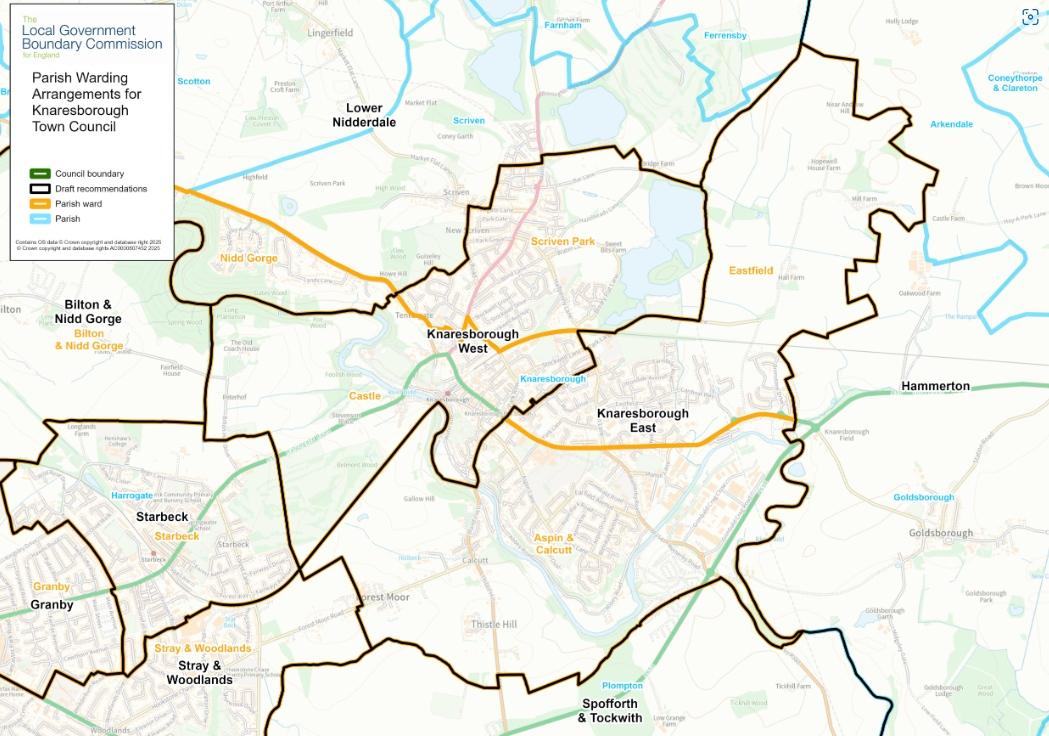Subscribe to trusted local news
In a time of both misinformation and too much information, quality journalism is more crucial than ever. By subscribing, you can help us get the story right.
- Subscription costs less than £1 a week with an annual plan.
Already a subscriber? Log in here.
15
Jun
Boundary changes show ‘astonishing lack of understanding’ of Harrogate and Knaresborough, say Tories

Harrogate and Knaresborough Conservative Association has raised concerns about proposed new council divisions in the constituency.
The Local Government Boundary Commission for England has published draft recommendations for new divisions and wards in North Yorkshire.
You can see a map of the proposals, with details of why changes have been proposed, here.
The boundaries are due to be finalised by May 2027 when the next round of local elections will be held.
Rebecca Reeve-Burnett, chair of the association, which contributed to the consultation, said:
The Harrogate and Knaresborough Conservative Association agree with a lot of what is in the proposals, but strongly disagree with certain aspects. Many of the areas we disagree with have been proposed by the local Liberal Democrats demonstrating an astonishing lack of understanding of our local communities.

The parish proposals for Harrogate.
Ms Reeve-Burnett highlighted four wards it was particularly concerned about. If adopted, Calcutt would be part of a Harrogate ward rather than a Knaresborough one and Pannal and Burn Bridge would be in the same ward as Birstwith.
Her comments for each one are in italics.
Pannal and Burn Bridge
The proposals put Pannal and Burn Bridge villages in with Birstwith - a suggestion made by local Liberal Democrats. This is one of the most problematic proposals in the whole document and demonstrates a clear lack of understanding of our local communities. Birstwith is a Nidderdale farming community. Pannal is a commuter village with strong road, rail and bus links to Leeds. Birstwith ought to be in a Nidderdale ward — in the community of which it is very much a part. Pannal and Burn Bridge, if separated from Harrogate, are better placed with villages in the Washburn valley such as Weeton and Huby, as they have been previously.
Killinghall and Hampsthwaite
The proposals put Killinghall and Hampsthwaite in with High Bond End in Knaresborough - a suggestion made by local Liberal Democrats. This leads to a bizarre situation where several Harrogate-facing villages are lumped into a ward with some of urban Knaresborough, which we do not believe is acceptable. An appropriately sized ward could be made by combining Killinghall parish with Hampsthwaite, Ripley, Nidd and South Stainley - villages with similar identities.

The parish proposals for Knaresborough.
Calcutt
Local Liberal Democrats suggested putting Calcutt into Stray and Woodlands ward of Harrogate. Calcutt is a Knaresborough village and should not be placed into an area where it will not be effectively represented. We have done a survey of everyone in Calcutt and those who responded were unanimous in their view that Calcutt should be in a Knaresborough ward, not a Harrogate one.
Claro villages
The proposals adopt a Liberal Democrat idea of putting many of the Claro villages such as Staveley, Arkendale, Coneythorpe and others together with Hammerton and other villages on the outskirts of York such as Moor Monkton and Long Marston. We don't find this acceptable and feel it demonstrates a lack of knowledge of the local area - the Claro villages look to Knaresborough and the numbers the boundary review is seeking to achieve for each ward can be achieved without having to cross to the York boundary and divide communities.
Lib Dem response
We asked Harrogate and Knaresborough Liberal Democrats if it wished to respond to the claims.
It directed us to a copy of the Lib Dem-controlled Harrogate Town Council's submission to the boundary commission, which says:
Harrogate Town Council is generally supportive of the recommendations being made and considers that the boundary commission has managed to successfully reflect the local communities within their proposals.
Harrogate Town Council appreciates the opportunity to contribute to this consultation and welcomes further dialogue, especially as part of any community governance review. We are keen to ensure boundaries are reflective of community identity, local geography, and access routes.
Why is the review happening?
The commission, an independent body set up by Parliament, is carrying out an electoral review of North Yorkshire because it is a relatively new local authority, established in 2023.
It says the proposed boundaries aim to ensure each councillor represents a similar number of electors; reflect the identity and interests of local communities; and help councils discharge their responsibilities effectively.
It has proposed having 89 councillors on North Yorkshire Council — a reduction of one.
They would represent 85 single-councillor divisions and two two-councillor divisions.
The final recommendations are expected in September this year.
1